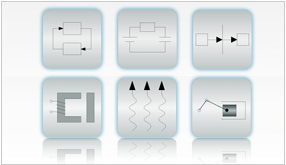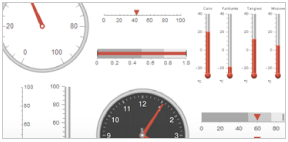New in 4.3
All new features in 4.3 »
Collaboration
Improved collaboration, with the ability to save models with all resource dependencies and predefined automatic model plots.
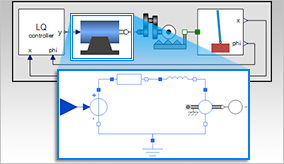
Model Analytics
Extended model analytics, with model summaries, model drilldowns and predefined model analysis tasks.

Performance Improvements
Performance improvements across the board, with faster model compilation, model search and model simulation.
Build times for larger models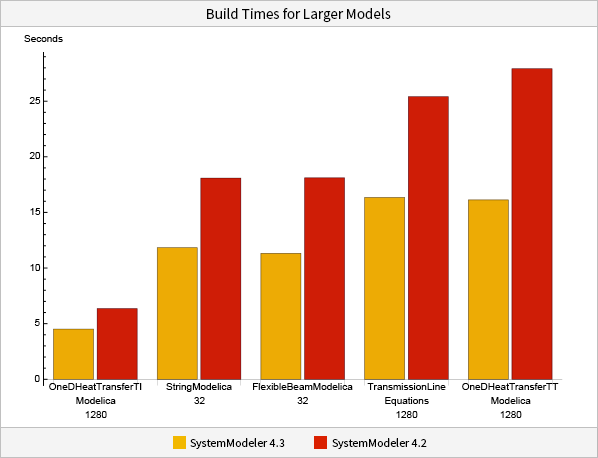
Build times for different models from the ScalableTestSuite.
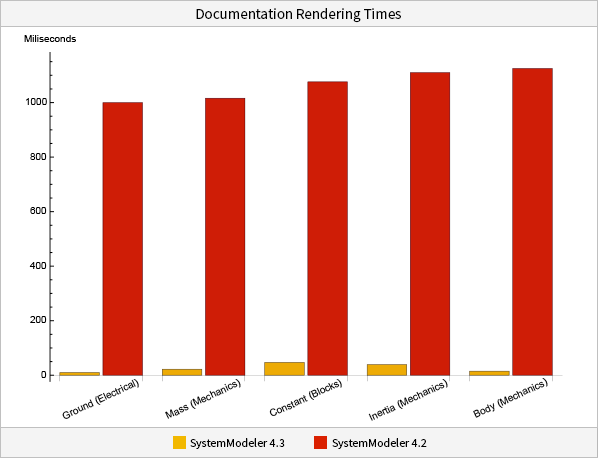
Time elapsed when listing components and examples in the Documentation Center.
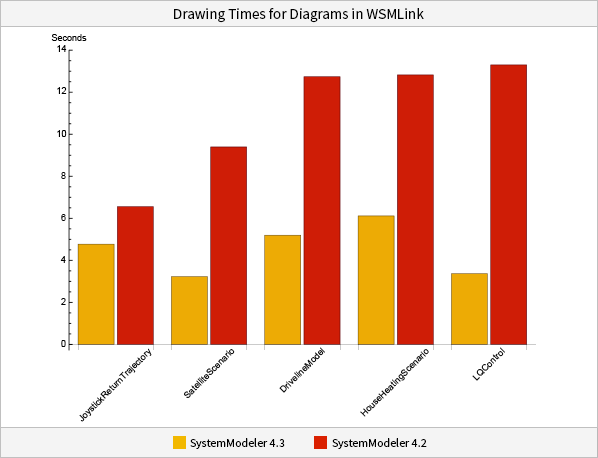
Measured times to render model diagrams in the Wolfram Language using WSMLink. Models taken from the new included industry and educational example packages.
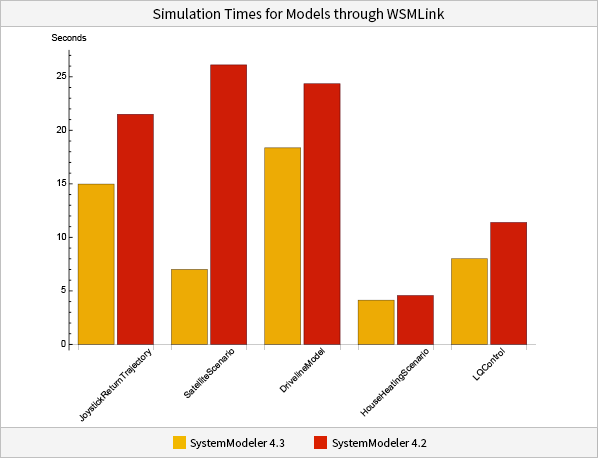
Measured times to simulate SystemModeler models in the Wolfram Language using WSMLink. Models taken from the new included industry and educational example packages.
New in 4.2
All new features in 4.2 »
Performance
Improved core technology, compiler and 64-bit Windows version allow for faster model compilation and larger models.
Comparison Graph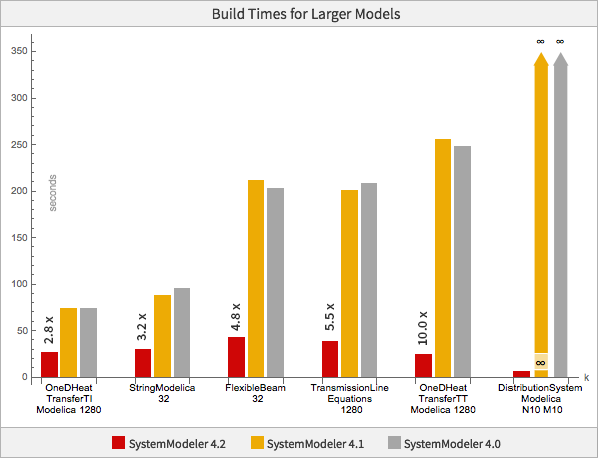
Compare timings from the ScalableTestSuite Library. Experiments were performed on an Intel Xeon 3.5 GHz Windows 7 system. The number above the red bar tells how many times faster SystemModeler 4.2 is compared to SystemModeler 4.0.
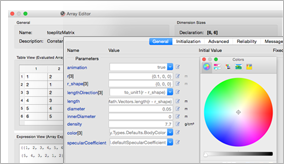
Usability
Parameters and variables can be changed in specialized editors, including an array editor, color picker and more.

Integration
Automatically create models from any data source or digital filter with the Wolfram Language. Simulation results are retrieved faster and plots are more accurate.
New in 4.1
All new features in 4.1 »
FMI—Standardized Model Import
Import models from other types of modeling and simulation tools with the standardized Functional Mockup Interface (FMI).
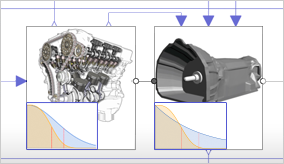
Reliability
Mathematica's complete suite for reliability analysis, with functionality for reliability block diagrams, fault trees and importance measures, can now be used with SystemModeler.
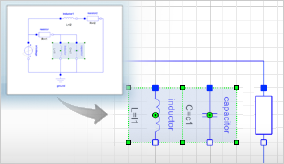
Model Development
Strengthened unit support and handling lets you input and display in the unit system of your choice. Copy and paste components among models.
Model Libraries
Connectivity & Deployment

FMI—Standardized Model Export
Deploy models with the standardized Functional Mockup Interface (FMI) for immediate use in a large number of tools.
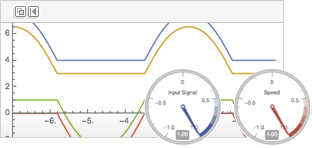
Interactive Simulation Control
Connect to a running real-time simulation from Mathematica; add controllers such as sliders and gamepads; and see real-time plots, gauges and other animations.
User Interface & Documentation
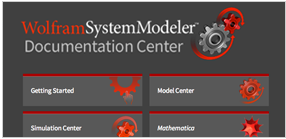
New Documentation Center
The new Documentation Center makes it easy to browse and search all product and library documentation. Extensive cross-linking makes it easy to go from components to examples and more. Text and video tutorials, including the Modelica by Example book, make it easy to learn, whether you are a beginner or an advanced user. Documentation Center
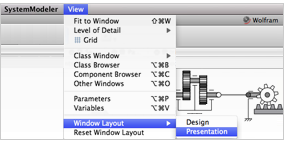
Improved Model Center
The new presentation mode makes Model Center a stronger showcasing environment with full drill-down and live edit capability. Several improvements to workflows, including incremental search of model classes, tabbed model parametrizations and direct simulation, make modeling more efficient.
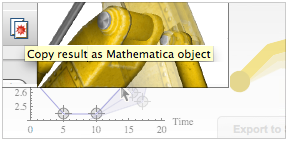
Improved Simulation Center
Simulation Center has improved performance and workflows, including faster model compilation and concurrent simulation support. Selecting objects in 3D animations now shows variables and parameters, and you can copy simulation results directly with one click on a Mathematica icon.
Linux Support
SystemModeler is now available for all major platforms: Windows, Mac and Linux.
Japanese Localization
SystemModeler is now available with a fully localized user interface and full translated documentation.
64-Bit
SystemModeler is now available in 64-bit versions for Mac and Linux.
Integration with Mathematica

Programmatically Create Models
Automatically create models from equations or control system models. Create structured models by connecting existing components. Or combine both approaches and create components from equations and interfaces and connect them in hierarchies. Cam Design »
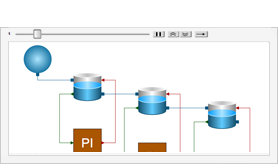
Model Diagrams
SystemModeler objects now use model diagrams as their visual representation. Diagrams either show the structure of connected models or an icon. Diagrams can be used together with other graphics, and they can be animated to show system behavior.
Tank Example »
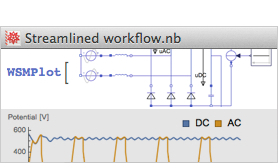
Streamlined Workflow
Use model diagrams to represent your models throughout Mathematica. Automatically use experiment settings for simulations. Other improvements include automatic plot legends, user assistance integration and more.
Key New Mathematica Features for SystemModeler
By using SystemModeler and Mathematica together, you get state-of-the-art modeling and technical computing as an integrated system.
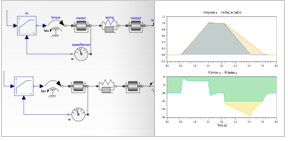
Enhanced Control Systems
Model a plant in SystemModeler, design a controller in Mathematica and automatically put them together. The control system functionality has been enhanced to include automatic PID tuning and support for DAE plant models, as well as delays in plant models and full nonlinear control capabilities. PID, Descriptor and Delay Control | Nonlinear Control
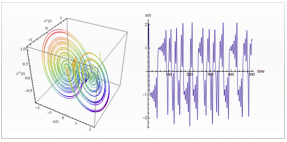
Mathematica Support for Hybrid and Differential Algebraic Equations
New hybrid and DAE solving capabilities mean that a greater range of SystemModeler models can now be solved in Mathematica. Hybrid Differential Equations | Enhanced Calculus
Signal Processing
Refine your simulation results with Mathematica's extensible platform for signal processing, including standard analog and digital filters. Signal Processing
Reliability Analysis
Complement models from SystemModeler with a complete suite for reliability analysis, including reliability block diagrams, fault trees, standby models and importance measures. Reliability
Time Series
Use automatic estimation of time series models from data and forecasting as input to simulation models, or use simulation results as input to forecasting models. Time Series Data | Time Series Models



